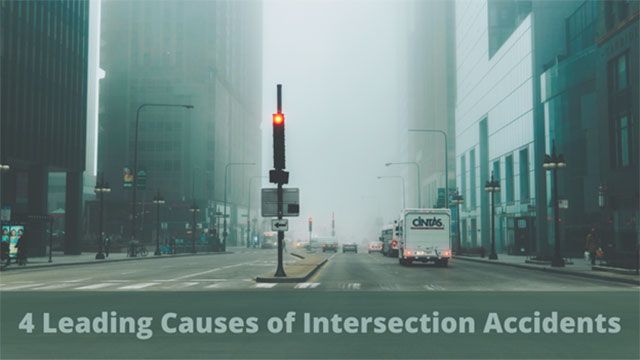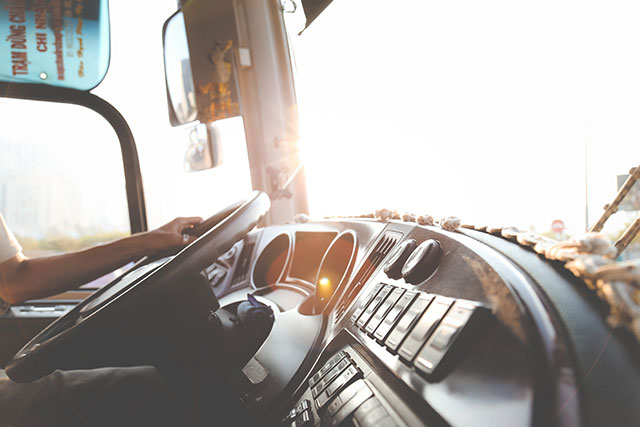According to the National Highway Traffic Safety Administration, intersections are the site of more than 25 percent of all car accidents. Many of these accidents could be avoided if drivers followed a few basic safety tips.
When approaching an intersection, always use caution. Especially stay alert for other vehicles that may turn or cross your path. If you are not sure what the other driver will do, wait until you are certain before proceeding.
Table of Contents
What are the Leading Causes of Intersection Car Accidents
Never enter an intersection if there is not enough room for your car to clear the intersection completely. Even if you have the right-of-way, you can still get hit if another vehicle violates your space. If you must stop at an intersection, ensure your car is completely stopped before proceeding. Do not start forward again until the way is clear and it is safe to do so.
Role of a personal injury lawyer
If you are hurt in an intersection wreck, you may want to contact a personal injury lawyer. It’s especially necessary if the other driver was at fault and you have medical bills or lost wages due to the crash. A personal injury lawyer can help you negotiate with the insurance company and may get you a larger settlement than you would receive on your own.
Causes of intersection accidents
Intersection wrecks are one of the most common accidents. Many factors can contribute to these accidents, including driver error, negligence, and recklessness. Poor signage or lighting can also lead to accidents at intersections. Another common cause is the failure to obey traffic signals.
Drivers not following the road rules, cars not being able to stop in time, and other distractions. Intersection wrecks can also be caused by pedestrians not paying attention to oncoming traffic or trying to cross the street when it is not safe.
Driver Behavior
According to the National Highway Traffic Safety Administration, driver behavior is a leading factor in wrecks that occur at intersections. More than 25% of all traffic fatalities happen at intersections, and many of those accidents are caused by drivers who make careless mistakes. Some of the most common driver behaviors that lead to wrecks at intersections include:
- Running red lights
- Making illegal turns
- Not yielding to pedestrians or other vehicles
- Failing to signal when changing lanes or turning
These behaviors can often lead to collisions with other vehicles, pedestrians, or bicyclists. In some cases, drivers may also lose control of their cars and crash into nearby buildings or roadside obstacles.
Pedestrian Behavior
A recent study by the Texas A&M Transportation Institute looked at pedestrian behavior at intersections and how to make them safer. The study found that pedestrians often do not follow the road rules, which can lead to accidents. The study also found that most accidents occur when there are no traffic signals or when the pedestrian crosses the street in an area with no sidewalks.
There are several reasons why intersections are so dangerous for pedestrians:
One problem is that many pedestrians think they have the right of way even when they don’t. In reality, pedestrians should only cross the street when it is safe and should never assume that drivers will stop for them.
Second, vehicles making turns can obscure the view of pedestrians who are crossing the street, making it difficult for drivers to see them. Drivers often fail to yield to pedestrians at intersections.
And third, intersections can be confusing for drivers and pedestrians, leading to miscommunications and accidents. Many pedestrians try to cross streets diagonally, which can confuse drivers. Drivers may not expect a pedestrian to cross in a diagonal direction and may not be looking for them in that spot.
Vehicular Factors
Many vehicular factors can lead to a wreck at an intersection. Some of these factors include: running a red light, driving too fast for conditions, and driving while distracted. When drivers don’t obey the road rules, it puts everyone at risk.
Driving while distracted can lead to a driver not seeing an oncoming car or failing to yield at a stop sign. Resulting in a collision that causes serious injuries. When drivers go too fast for the conditions, they may not be able to stop in time when they encounter a traffic signal or stop sign. Speeding can lead to a crash that causes serious injuries or even death.
Environmental Factors
When people are injured in intersection wrecks, it is often due to environmental factors. These can include poor lighting, obstructed views, and dangerous road conditions. If a driver can’t see other cars or pedestrians coming, they may not be able to stop in time, which can lead to a serious accident. Additionally, if something on the road causes a driver to lose control of their cars, such as a pothole or oil slick, that can also result in a wreck. When it comes to intersection car accidents, environmental factors can often be the difference between being seriously hurt and walking away unscathed.
Conclusion
There are several causes for intersection car accidents, but the leading cause is still human error. Drivers need to be aware of their surroundings and not drive distracted, intoxicated or fatigued. Pedestrians should also be aware of their surroundings and use crosswalks when possible.
A study by the National Highway Traffic Safety Administration (NHTSA) found that the most dangerous place for a pedestrian is an intersection. In 2013, more than 4,700 pedestrians were killed in traffic crashes, and intersections were the site of nearly two-thirds of those fatalities.














